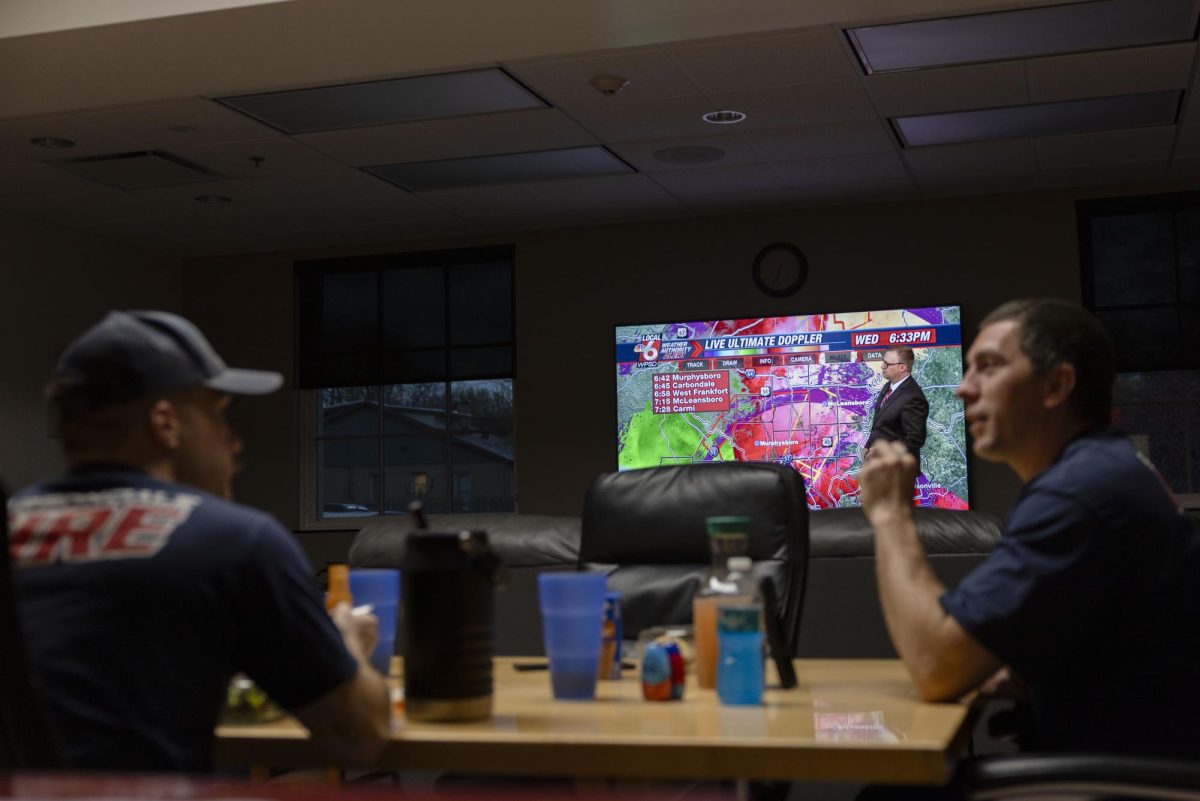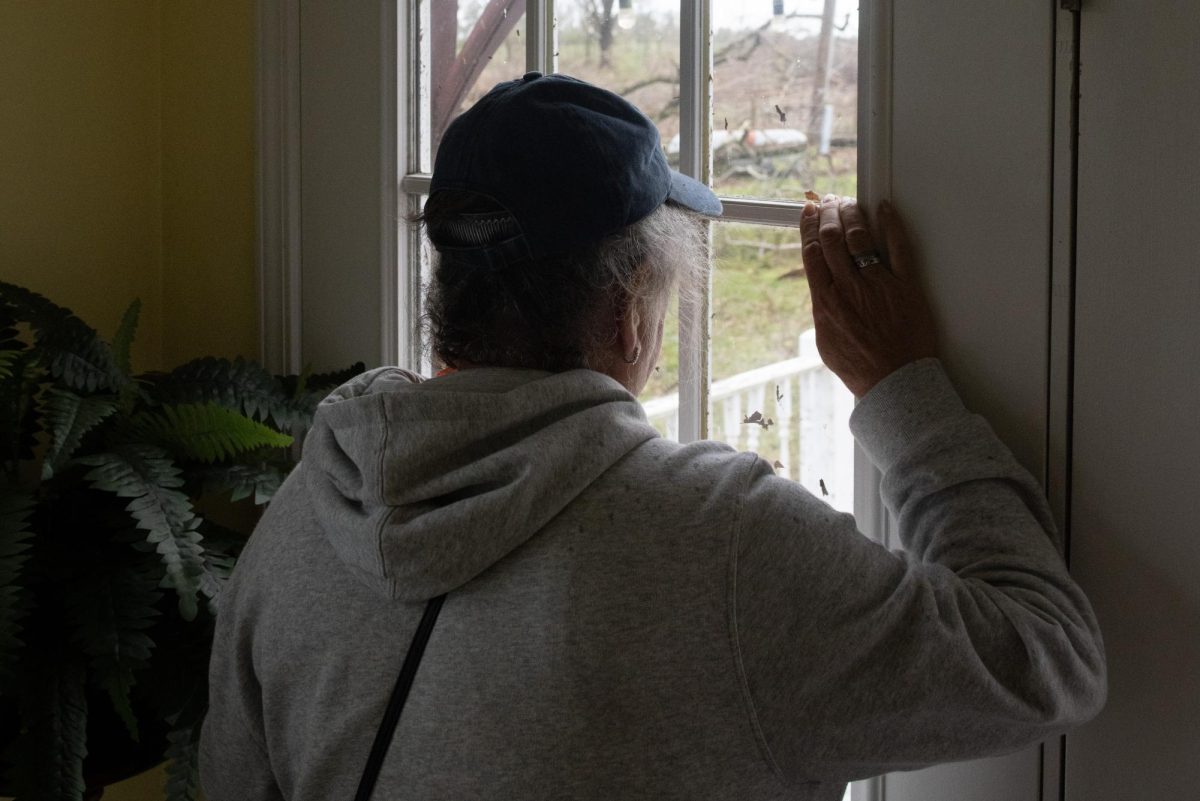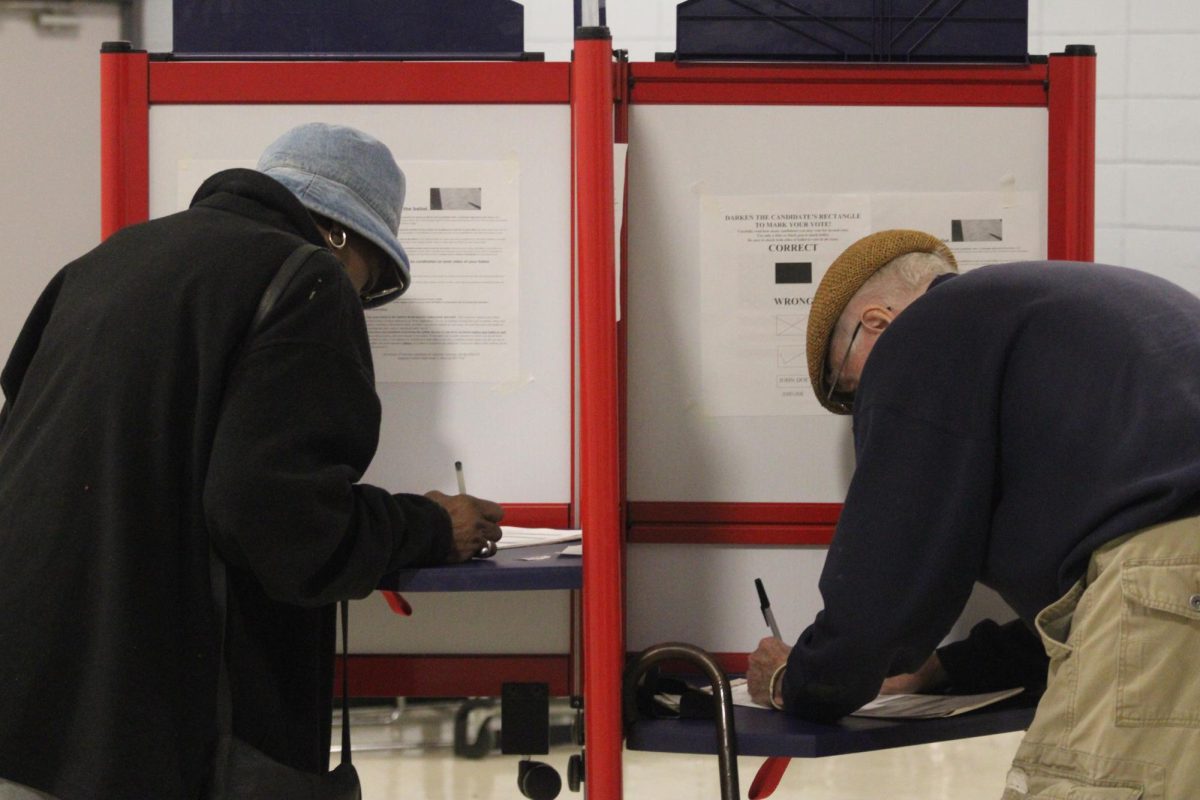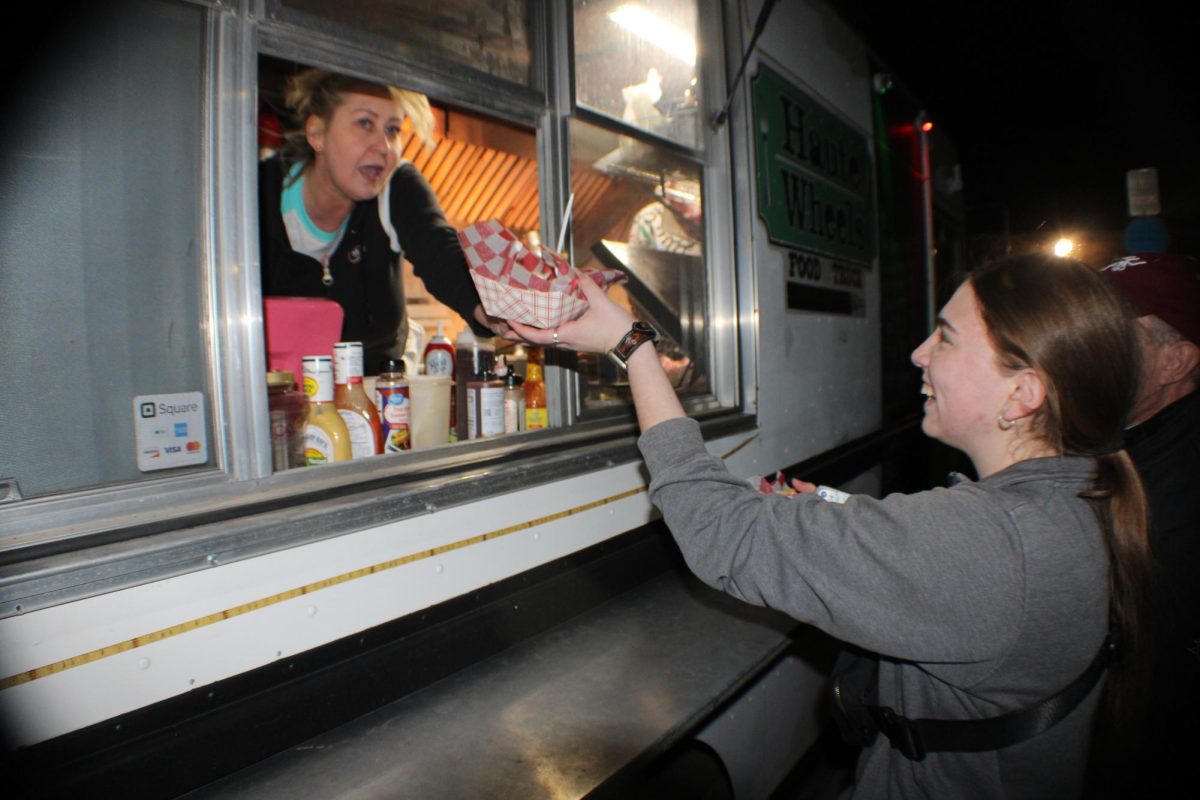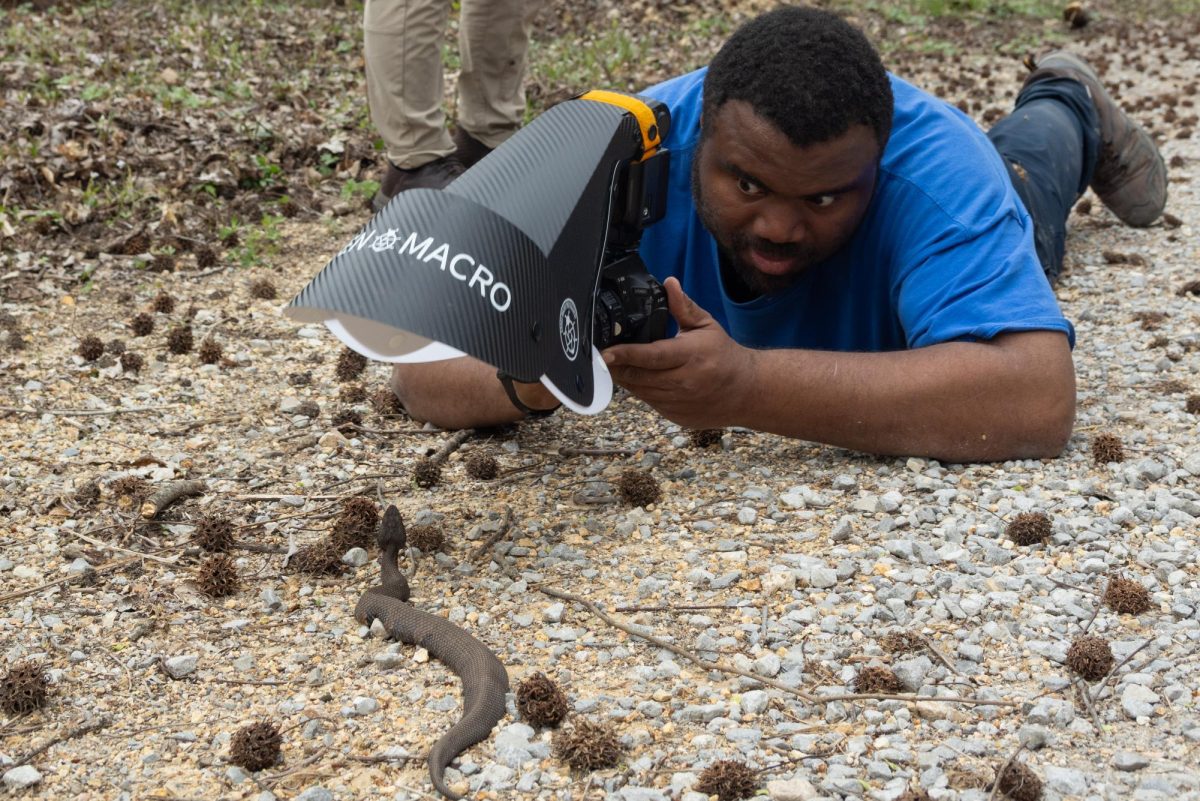It takes effort to adjust to a remote learning environment, just like with in-person learning. Three SIU students who are far from campus say, despite differences in lifestyles, locations and management systems as online learners, it’s very doable.
Richie Climent, living in Killeen, Texas with his wife and three kids, is currently enlisted in the U.S. Army, pursuing his journalism degree through SIU.
Advertisement
“It was hard to find something online that also met the criteria the Army would pay for. SIU was one of the rare ones that offered it online,” Climent said. “I want to be a writer. I have family members that come to me when they need something written. I have a knack for it and would love to write creatively.”
He talked about being able to pursue his goals while juggling his other responsibilities at the same time.
“Everything is laid out in the syllabus, it’s structured and super easy,” he said. “I’ll read the content, and for my classes mostly everything is due on Friday, so I’ll make sure to do my reading Monday and Tuesday, and sometimes while I’m at work I’ll make notes on my phone so I’ll have something to go back to when I start to do the writing. You don’t want to wait until the last minute. By Wednesday I’ll start writing my papers. Thursday I’ll try to get it done so I can submit my work Thursday or Friday.”
This is Climent’s third semester with SIU, and he’s taking two classes at a time.
Advertisement*
“I feel that for me personally, two courses is just right,” he said. “It’s a bit overwhelming but achievable, I wouldn’t want to do any more than that.”
A state away from Climent, in Santa Fe, New Mexico, Jason Lombard is working towards his bachelor’s degree as well.
“I started in 2020, two months before covid. I was going to Northern New Mexico College and I was there for about two months and then we all got sent home due to covid and I’ve been online since. I got my AA degree there but then I transferred to SIU to do journalism and communications.”
During the start of the pandemic in 2020, 75% of students were taking some sort of classes remotely that fall semester, with 46.7% of those students exclusively online learners, and 10.3% of those online learners enrolled in a college outside of their state, per the National Center for Education Statistics. Those numbers continue to fluctuate, but this avenue for accessible education remains relevant.
Jason Lombard is a caretaker, travels for fun and frequently drives 6 hours to southern New Mexico to work on his property. All in all, Lombard’s typically on the go. For him, organization looks a little different.
He needs to make sure he can access his courses when he doesn’t have regular access to the internet. To do this he utilizes a program called Travefy which allows him access while moving around in his trailer or just hanging out on his property.
Even without Travefy, Lombard said he uses an innovative organization system offline.
“I have been trying to use less paper and more digital methods,” he said. “ I download content from my classes, and on my desktop I’ll make a folder for each of them. Under the main folder for the class, I’ll make another folder for each week’s content and download and insert the content there.”
Lombard said as soon as he’s done discussing his class schedule with his advisor, he will make the initial course folder on his home screen.
For the assignments, he will copy the directions and paste them on a word document then save that document to his home screen. If it’s still on the home screen by the end of the week, and not within the course folder, he will know he still needs to complete it. After it’s done and in the right place, he will upload it to D2L.
Lombard plans to continue traveling even to the extent of living life on the road, which is the main reason online courses are so important to him.
“I have been taking three courses per semester, but I am going to start taking four to bring my graduation date closer,” he said.
If it weren’t for remote learning and the system he designed for his lifestyle, Lombard said it would take him much longer to complete his degree. He hopes to eventually find work meeting his life goal of following sand racing such as the Dakar Rally in southern Europe and Africa, either as a reporter or by other means.
Across the country, in upstate New York, Thomas Miller is participating in SIU’s online bachelor’s program.
He said he has been impressed with SIU and its journalism program ever since his search online introduced him to a broad selection of universities. He said, since the beginning, SIU’s program was laid out expertly.
His schedule is also packed.
“I’m in retail and that’s pretty time consuming,” Miller said. “Forty+ hours a week plus this [school]. My time is mainly just work, school and finding time for other things like exercise and relaxing.”
For Miller, it’s a matter of making sure his schedule is laid out efficiently so he’s able to fit everything in.
“I qualify in New York for financial aid, so I have to take at least 12 credit hours. So that’s what I’ve been doing. I think any more than that with my lifestyle right now would overwhelm me,” Miller said.
He utilizes a physical calendar and white board hanging on one of his walls. The calendar lays out his semester in full, and the whiteboard is broken up into four quadrants, detailing each class and weekly reading dates and due dates. This duo gives him an overview of the entire semester while allowing him to hone in on more immediate details simultaneously.
“Time management is the most difficult,” he said. “ The readings are time consuming, so I have a system down.”
The days prior to deadlines are for the readings that will aid him in studying for the respective assignments. He will typically focus on one class at a time.
“I’ll retain the information, but then I’ll start to second guess myself, so I’m like, ‘I might as well just do it after I’m done reading for it,’” Miller said.
Ciment, Lombard and Miller agree establishing strong communication with their instructors, managing their time, and having some sort of organization system are all vital.
“I email my professors like three times a week,” Miller said. “As soon as the semester starts, especially if it’s your first time (remote learning), reach out to your professors. Introduce yourself, let them know you’re looking forward to the semester, however you want to put it, but it makes it easier to break through that awkward vibe when you have rapport with them from day one. You can get to know them.”
Miller also said it’s important to get a relationship going with each professor.
“Knowing how quickly they reply and their preferred method of communication,” he said. “Manage your time by knowing your due dates and making sure you’re on top of them. Organize your time by finding a system that works for you that allows you to track assignments, when they’re due, and that you’re completing them. Learn to navigate D2L and what parts of them your professor uses most often to communicate, and where the content can be found.”
The three students profiled here walk different paths with the same goal, pursuing a quality education. Students who want to attend SIU remotely will have to find a system that works for them, but Climent, Lombard and Miller suggest all remote students be committed, understand how they learn best, and be disciplined to follow a schedule.
Source:
https://nces.ed.gov/programs/digest/d22/tables/dt22_311.15.asp
Thomas – SIU student, upstate New York
Richie – SIU student, Killeen, Texas
Jason—SIU student, Santa Fe, New Mexico
Remote learning has been a consistently popular topic within academia. Since 2020, 75% of students were taking some sort of classes remotely that fall semester, with 46.7% of those students exclusively online learners, per the National Center for Education Statistics. Those numbers continue to fluctuate, but this avenue for accessible education remains relevant.
“I started in 2020, 2 months before covid here in New Mexico,”
“I was going to Northern New Mexico College”
“I was there for about two months and then we all got sent home due to Covid and I’ve been online since.”
“I got my AA degree there but then I transferred to SIU to do journalism and communications.”
Since 2020, 75% of students were taking some sort of classes remotely that fall semester, with 46.7% of those students exclusively online learners, per the National Center for Education Statistics. Those numbers continue to fluctuate, but this avenue for accessible education remains relevant.
Advertisement













